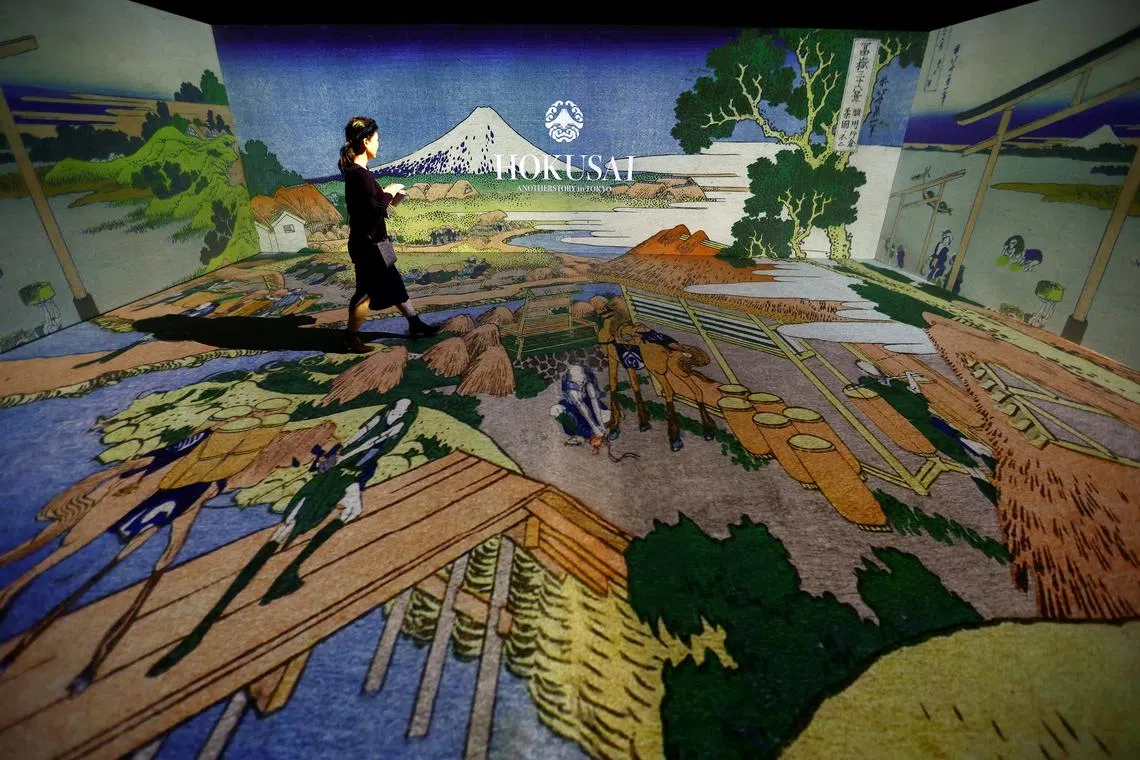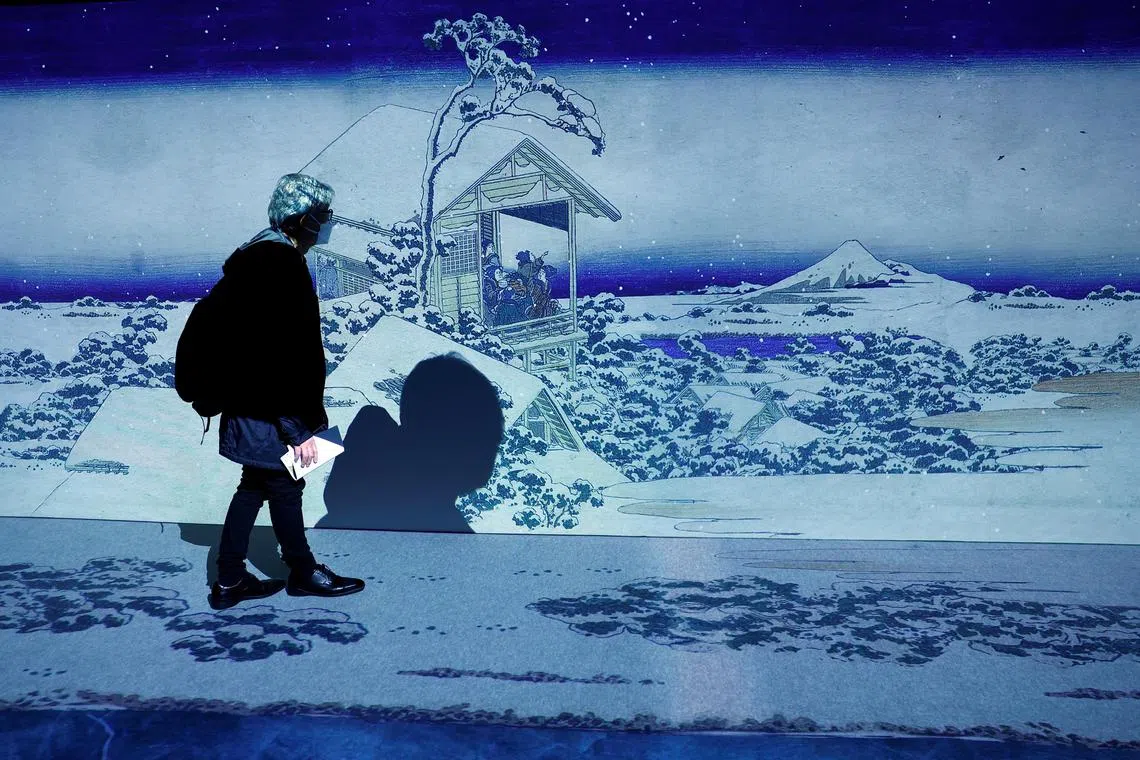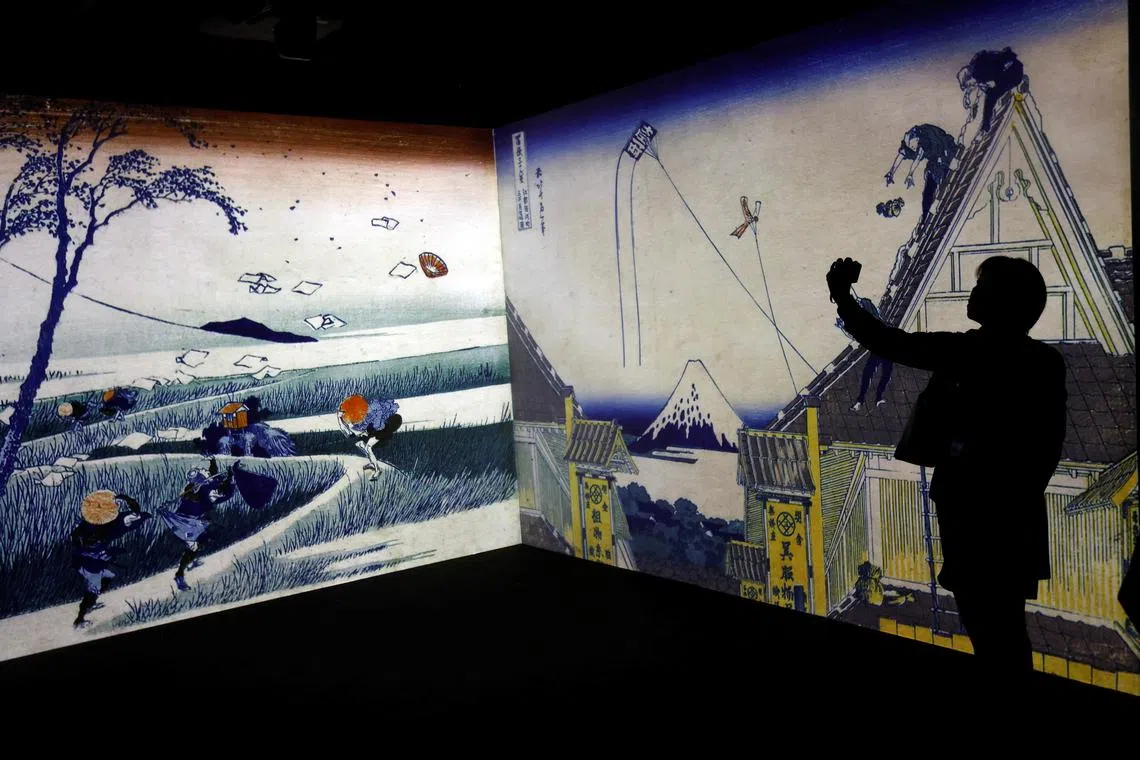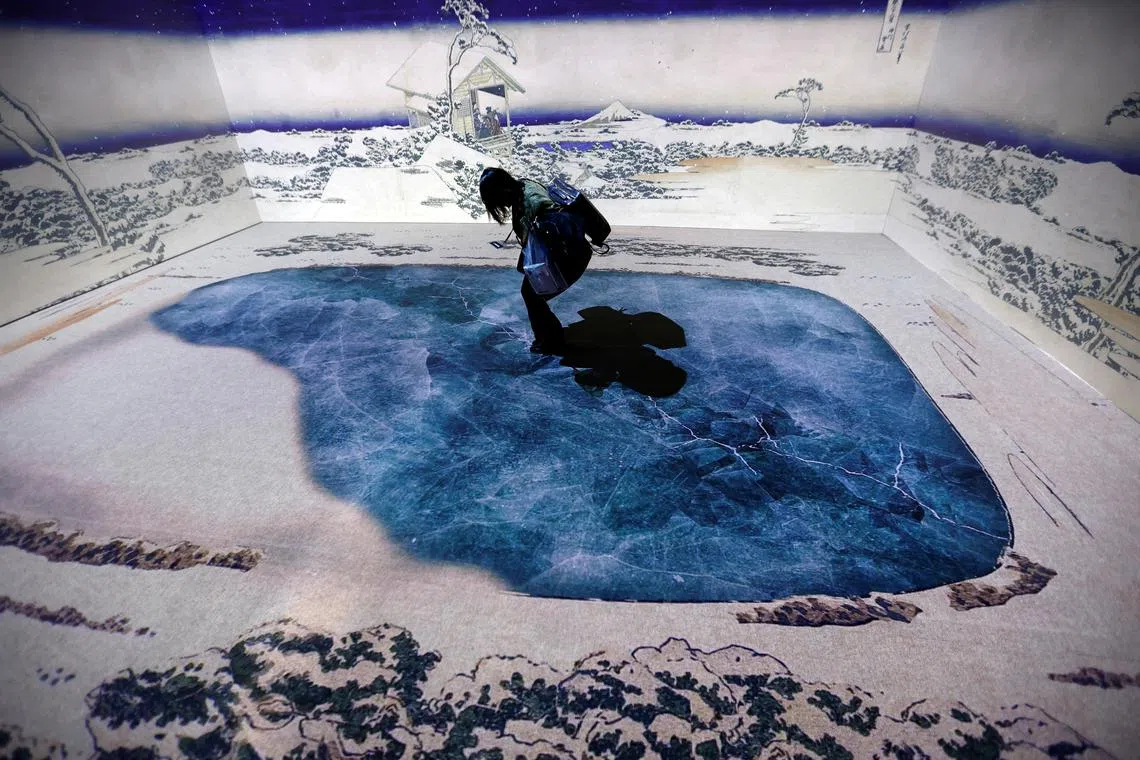High-tech spin for samurai-era ukiyo-e artist Hokusai at Tokyo exhibit
Sign up now: Get ST's newsletters delivered to your inbox

The Hokusai: Another Story In Tokyo exhibition uses cutting-edge technology to bring to life the work of iconic samurai-era ukiyo-e artist Katsushika Hokusai.
PHOTO: REUTERS
Follow topic:
TOKYO – Visitors can step back in time to Japan's samurai era in a new Tokyo exhibition that uses cutting-edge technology to bring to life the work of iconic Japanese artist Hokusai.
Hokusai: Another Story In Tokyo marks the latest in a series of immersive attractions that have sprung up in the capital, as well as growing interest in Japan's cultural past as record numbers of tourists flood the country.
The exhibition, tucked into a downtown shopping centre, invites patrons to step into scenes of nature and village life depicted by the master of Edo Period woodblock art.
Technical wizardry from digital imagery firm Ars Techne reproduces the washi paper texture of his prints. Haptic plates in the floor, developed by Sony PCL, give the feel that one is walking on a beach, ice or across a rickety bridge.
"The concept is not just to see something, but to also have an experience that goes beyond the real thing, to let you feel the scenery that Hokusai saw," said Hiroki Inokuchi, a visual artist with Red Geek Pictures, which helped develop the exhibition.

The exhibition runs at Tokyu Plaza Shibuya until June 1.
PHOTO: REUTERS
Born in 1760, Katsushika Hokusai took the medium known as ukiyo-e to new artistic heights and popularity through his unique use of colour and dynamic composition.
His depictions of Mount Fuji have become emblematic of Japan, with his masterpiece The Great Wave Off Kanagawa now gracing the back of the nation's 1,000-yen note.
His prints became a hit in Europe after his death in 1849, kindling the Japonisme movement in art and inspiring painters such as Claude Monet and Vincent van Gogh.

Born in 1760, Katsushika Hokusai took the medium known as ukiyo-e to new artistic heights and popularity through his unique use of colour and dynamic composition.
PHOTO: REUTERS
The Hokusai exhibition, which runs at Tokyu Plaza Shibuya until June 1, follows other tech-driven, immersive art showcases in Tokyo that have proven to be draws among residents and overseas visitors.
The digital art collective teamLab has two interactive museums in the capital that have set Guinness World Records for attendance.

Haptic plates in the floor at the exhibition give the feel that one is walking on a beach, ice or across a rickety bridge.
PHOTO: REUTERS
Ms Mariko Fukumizu, 42, said her four-year-old daughter loved stepping on and cracking make-believe ice in a rendering of one of Hokusai's winter scenes.
"I like looking at art, but it's difficult with kids, so it's good to be able to go and experience things together," she said.
Japan is experiencing a tourism boom fuelled by the weak yen, while cultural exports from manga to movies are seeing unprecedented popularity. The 2024 period epic drama Shogun swept major awards at both the Emmys and Golden Globes.
Mr Ethem Sonmez, a 22-year-old visitor from Turkey, said Japanese animation and comics are rising in popularity in his country, adding that an exhibit room that simulates wind rushing through a Hokusai landscape nearly brought him to tears.
“It was like the moment I first saw Fuji in the Shinkansen bullet train,” he said. “It was mesmerising, and I felt it again here.” REUTERS

